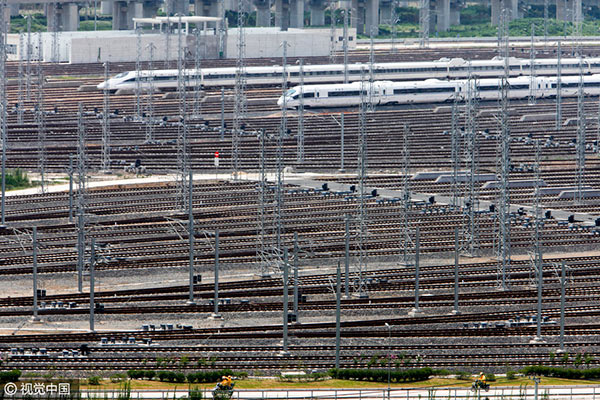Spending on infrastructure paying off for regions
 |
|
Workers on motorcycles ride through a high-speed rail bullet train maintenance center on the outskirts of Shanghai, July 27, 2011. [Photo/VCG] |
Growth in investment in fixed-assets outstripped the national average of 8.2 percent in 26 provinces, Shanghai Securities News has reported.
All 31 provinces, except for Beijing, Shanghai, Heilongjiang and Liaoning, saw their fixed-asset investment grow faster than gross domestic product (GDP) during the same period.
Of the provinces, municipalities and autonomous regions that have released fixed-asset investment figures for the first three quarters of the year, Southwest China's Guizhou posted the fastest growth rate of 21.7 percent year on year.
Tibet autonomous region and Yunnan province ranked second and third respectively, both posting growth rates of more than 19 percent.
Fixed-asset investment includes capital spent on infrastructure, property, machinery and other physical assets.
Data showed that infrastructure investment is becoming the driving force for local governments to attract investment with more than half the regions recording a growth rate in infrastructure spending of more than 20 percent.
Central and western regions were among the strongest performers, with Inner Mongolia autonomous region, Yunnan province, Chongqing municipality and Shaanxi province all posting a growth rate of more than 30 percent in infrastructure investment.
Infrastructure spending focused on transportation, postal industry, water environment, public facility management, internet, and production supply sectors, the newspaper reported.
Zhang Jun, chief economist of Morgan Stanley Huaxin Securities, told the newspaper that there is no basic change in the economic growth patterns.
"Infrastructure and real estate investment still remain the driving force for economic growth."
Next year, the government should?set a lower growth target for the economy, in a bid to provide more room for structural reforms, he added.























